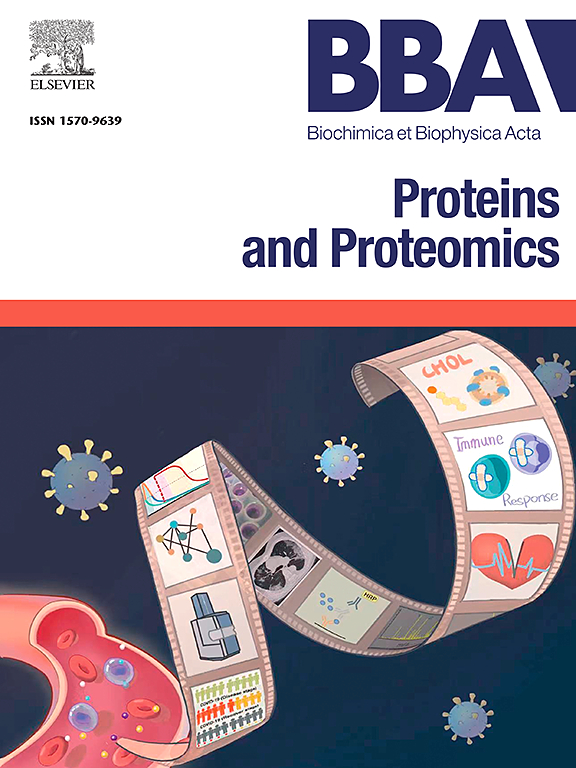α-突触核蛋白原纤维对免疫细胞的细胞毒性研究。
IF 2.3
4区 生物学
Q3 BIOCHEMISTRY & MOLECULAR BIOLOGY
Biochimica et biophysica acta. Proteins and proteomics
Pub Date : 2025-02-01
DOI:10.1016/j.bbapap.2024.141061
引用次数: 0
摘要
α-突触核蛋白(α-Syn)是一种参与细胞囊泡运输的小细胞质蛋白,在中脑、下丘脑和丘脑中逐渐聚集与帕金森病(PD)有关。淀粉样蛋白低聚物和原纤维是这种聚集的结果,对神经元具有高度毒性。然而,淀粉样蛋白诱导的神经元毒性是否是PD患者进行性神经变性的主要机制尚不清楚。在目前的研究中,我们研究了在无脂环境中以及两种磷脂存在下形成的α-Syn原纤维对巨噬细胞、树突状细胞和小胶质细胞的细胞毒性。我们发现α-Syn原纤维对树突细胞和小胶质细胞的毒性比神经元大得多。我们还观察到这种淀粉样蛋白对巨噬细胞的毒性很低。实时聚合酶链反应(RT-PCR)结果表明,淀粉样蛋白聚集体的毒性与细胞自噬水平有关。这些结果表明,大脑免疫系统的严重损伤可能是PD发病时发生的神经退行性过程的第一站。本文章由计算机程序翻译,如有差异,请以英文原文为准。
Elucidation of cytotoxicity of α-Synuclein fibrils on immune cells
Progressive aggregation of α-synuclein (α-Syn), a small cytosolic protein involved in cell vesicle trafficking, in the midbrain, hypothalamus, and thalamus is linked to Parkinson's disease (PD). Amyloid oligomers and fibrils formed as a result of such aggregation are highly toxic to neurons. However, it remains unclear whether amyloid-induced toxicity of neurons is the primary mechanism of the progressive neurodegeneration observed upon PD. In the current study, we investigated cytotoxicity exerted by α-Syn fibrils formed in the lipid-free environment, as well as in the presence of two phospholipids, on macrophages, dendritic cells, and microglia. We found that α-Syn fibrils are far more toxic to dendritic cells and microglia compared to neurons. We also observe low toxicity levels of such amyloids to macrophages. Real-time polymerase chain reaction (RT-PCR) results suggest that toxicity of amyloids aggregates is linked to the levels of autophagy in cells. These results suggest that a strong impairment of the immune system in the brain may be the first stop of neurodegenerative processes that are taking place upon the onset of PD.
求助全文
通过发布文献求助,成功后即可免费获取论文全文。
去求助
来源期刊
CiteScore
8.00
自引率
0.00%
发文量
55
审稿时长
33 days
期刊介绍:
BBA Proteins and Proteomics covers protein structure conformation and dynamics; protein folding; protein-ligand interactions; enzyme mechanisms, models and kinetics; protein physical properties and spectroscopy; and proteomics and bioinformatics analyses of protein structure, protein function, or protein regulation.

 求助内容:
求助内容: 应助结果提醒方式:
应助结果提醒方式:


